#Yalta forest
Explore tagged Tumblr posts
Video
youtube
Ялтинский лес над п. Горное (Эриклик). Крым, Ноябрь. Yalta forest. Crime...
#Yalta forest#forest over the village of Gornoe (Ericlik)#Crimea#November in Crimea#Yalta in November#Yalta reserve#Crimean autumn#поляна пейнтболистов#Ялта пейнтбол#лес пейнтбол#autumn colors#Crimean beauty#pine forest#autumn in the forest#ялтинский лес#лес над п. Горное (Эриклик)#Крым#Ноябрь в Крыму#Ялта в ноябре#ялтинский заповедник#крымская осень#краски осени#красоты Крыма#сосновый бор#осень в лесу
2 notes
·
View notes
Text

Ai-Petri, Ukraine - by Marina Trygub
#ukraine#Ai-Petri#yalta#crimean mountains#trees#forest#enchanted#flowers#sun through trees#nature#landscape
372 notes
·
View notes
Photo

Просто восхитительные выходные! 🖤 #Crimea #Yalta #photo #nature #travel #spring #green #blue #forest #sea #Крым #Ялта #фото #природа #весна #зеленый #голубой #лес #море #путешествия #поход #счастьеесть #счастьерадость (at Autonomous Republic of Crimea)
#счастьеесть#голубой#ялта#путешествия#blue#счастьерадость#crimea#фото#forest#лес#green#nature#весна#yalta#море#spring#природа#поход#зеленый#крым#travel#photo#sea
3 notes
·
View notes
Photo






13th October 1911 : Day at Ai-Petri part 1/4
Tsar Nicholas II, Grand Duchess Olga Nikolaevna, Grand Duchess Tatiana Nikolaevna and Grand Duchess Maria Nikolaevna arriving by motor in Ai-Petri
"13th October. Thursday. Woke up to a thick fog. At 10 o'clock went with Olga, Tatiana and Maria on a motor to Ai-Petri. Before reaching the Farm, left the area of fog and further up, the whole day stayed radiant and warm. At Ai-Petri, we met with Yusupov and his guests and went to his deer paddock to the left of the Bakchisaray high road. Mounted horses and rode 4 versts through a beautiful beech forest to a steep cliff, from where there is a striking view of the Kokoz Valley and three hillsides. Returned to the tent and sat down to have breakfast at 1 3/4. The warmth in the mountains and the air were intoxicating. Returned home at 5 o'clock delighted with the day [...]"
1911 Diary of Tsar Nicholas II
"13th October. Thursday. In the morning at 10 o'clock with Papa, we three drove by motor through Ai-Petri to the new estate of Pr. Yusupov. Everyone rode on horseback and looked at the view of the mountains, beautiful [...] Had breakfast in his Egyptian tent and were home at five. Heavy fog in Livadia and Yalta all day long. Had dinner with Mama and Papa. Rode a gray horse "Dulber" [...] "
1911 Diary of Grand Duchess Olga Nikolaevna
Photos from: Grand Duchess Tatiana Nikolaevna's 1910-1912 Album/ Pages 21+21b - photos 304, 305, 309, 310, 311, 317
#1911#crimea#OTM#Olga Nikolaevna Romanova#Tatiana Nikolaevna Romanova#Maria Nikolaevna Romanova#Nicholas II#Ai-Petri
76 notes
·
View notes
Text
word find xxviii!
thank u for the tag @vellichor-virgo !! my words are bruise, secret, stumble, and lovely :)
bruise:
“Helluvan initiation,” Yalta said, grinning from ear to ear. Fin was limping and Xike was holding his side like he’d broken or bruised a rib; Lu and the twins were both dirty and bloody with scrapes from gravel or the wyvern itself. Yalta’s armor and clothing were smoking in patches but she didn’t seem to care nor mind.
secret:
He smelled like coppery monster blood and gunpowder and the tang of woodsmoke. He smelled like the woods behind her childhood home: safe and dark and secret.
He smelled like home.
“’m sorry,” Malice said into rows of obsidian-black locs. “I didn’t mean to almost die. I don’t want—I didn’t want to scare you.”
stumble:
The group thought this was the funniest thing they’d ever heard. Uproarious laughter followed, along with Fin slapping Malice on the back and making her stumble two feet forward, to her infinite chagrin.
lovely:
The map itself was made of a lovely, thick vellum, foxing at the edges but well-kept. The ink was faded and in a dark burgundy, marking out a little legend and compass rose in one corner with a neat hand. Whoever had made it had put a lot of care into it. The map only covered the surrounding few miles in either direction; there was a little drawing of a spiky castle in the northeast and careful crosshatching in the southwest that meant water. That was the only body of water marked on the map. It was full of fantastical things and places, like Bandersnatch Lairs or Jubjub groves or mushroom forests.
tag games taglist (ask to be + / -): @47crayons , @sleepy-night-child , @bladeverbena , @drippingmoon , @vellichor-virgo , @maderilien , @writing-is-a-martial-art , @wiz-is-sorta-a-writer , @thelaughingstag , @mj-is-writing , @hellowkatey , @rickshaww , @gayskywalkcrs , @lorspolairepeluche , and anyone else who wants to do this !! your words are (in)finite, cake, pole, cup, and spine!
4 notes
·
View notes
Text
The Realism in K Project - The Bombings of Dresden
These days are a time to celebrate our love for our friends and K Project, but also to remember some history. It was during the days of February 13th to 15th 1945 in fact, that the events leading to the start of K Project's story took place: the Bombings of Dresden.

Did you know that K Project is inspired by a real event that took place in World War II?
From February 13 to February 15, 1945, during the final months of World War II (1939-45), Allied forces bombed the historic city of Dresden, located in eastern Germany. The bombing was controversial because Dresden was neither important to German wartime production nor a major industrial center, and before the massive air raid of February 1945 it had not suffered a major Allied attack. By February 15, the city was a smoldering ruin and an unknown number of civilians—estimated at somewhere between 35,000 and 135,000–were dead.

Bombing of Dresden: Background
By February 1945, the jaws of the Allied vise were closing shut on Nazi Germany. In the west, Nazi leader Adolf Hitler’s (1889-1945) desperate counteroffensive against the Allies in Belgium’s Ardennes forest had ended in total failure. In the east, the Red army had captured East Prussia and reached the Oder River, less than 50 miles from Berlin. The once-proud Luftwaffe was a skeleton of an air fleet, and the Allies ruled the skies over Europe, dropping thousands of tons of bombs on Germany every day.
From February 4 to February 11, the “Big Three” Allied leaders–U.S. President Franklin Roosevelt (1882-1945), British Prime Minister Winston Churchill (1874-1965) and Soviet Premier Joseph Stalin (1878-1953)–met at Yalta in the USSR and compromised on their visions of the postwar world. Other than deciding on what German territory would be conquered by which power, little time was given to military considerations in the war against the Third Reich. However, Churchill and Roosevelt did promise Stalin to continue their bombing campaign against eastern Germany in preparation for the advancing Soviet forces.

World War II and Area Bombing
An important aspect of the Allied air war against Germany involved what is known as “area” or “saturation” bombing. In area bombing, all enemy industry–not just war munitions–is targeted, and civilian portions of cities are obliterated along with troop areas. Before the advent of the atomic bomb, cities were most effectively destroyed through the use of incendiary bombs that caused unnaturally fierce fires in the enemy cities. Such attacks, Allied command reasoned, would ravage the German economy, break the morale of the German people and force an early surrender.
Germany was the first to employ area bombing tactics during its assault on Poland in September 1939. In 1940, during the Battle of Britain, the Luftwaffe failed to bring Britain to its knees by targeting London and other heavily populated areas with area bombing attacks. Stung but unbowed, the Royal Air Force (RAF) avenged the bombings of London and Coventry in 1942 when it launched the first of many saturation bombing attacks against Germany. In 1944, Hitler named the world’s first long-range offensive missile V-1, after “vergeltung,” the German word for “vengeance” and an expression of his desire to repay Britain for its devastating bombardment of Germany.
The Allies never overtly admitted that they were engaged in saturation bombing; specific military targets were announced in relation to every attack. However, it was but a veneer, and few mourned the destruction of German cities that built the weapons and bred the soldiers that by 1945 had killed more than 10 million Allied soldiers and even more civilians. The firebombing of Dresden would prove the exception to this rule.
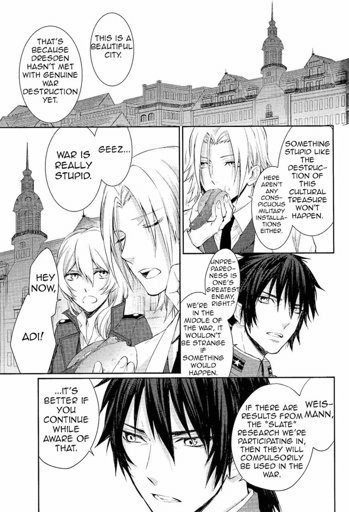
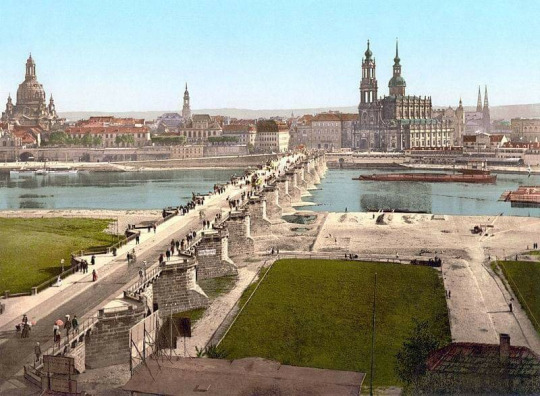
Bombing of Dresden: February 1945
Before World War II, Dresden was called “the Florence of the Elbe” and was regarded as one the world’s most beautiful cities for its architecture and museums. Although no German city remained isolated from Hitler’s war machine, Dresden’s contribution to the war effort was minimal compared with other German cities. In February 1945, refugees fleeing the Russian advance in the east took refuge there. As Hitler had thrown much of his surviving forces into a defense of Berlin in the north, city defenses were minimal, and the Russians would have had little trouble capturing Dresden. It seemed an unlikely target for a major Allied air attack.
On the night of February 13, hundreds of RAF bombers descended on Dresden in two waves, dropping their lethal cargo indiscriminately over the city. The city’s air defenses were so weak that only six Lancaster bombers were shot down. By the morning, some 800 British bombers had dropped more than 1,400 tons of high-explosive bombs and more than 1,100 tons of incendiaries on Dresden, creating a great firestorm that destroyed most of the city and killed numerous civilians. Later that day, as survivors made their way out of the smoldering city, more than 300 U.S. bombers began bombing Dresden’s railways, bridges and transportation facilities, killing thousands more. On February 15, another 200 U.S. bombers continued their assault on the city’s infrastructure. All told, the bombers of the U.S. Eighth Air Force dropped more than 950 tons of high-explosive bombs and more than 290 tons of incendiaries on Dresden. Later, the Eighth Air Force would drop 2,800 more tons of bombs on Dresden in three other attacks before the war’s end.
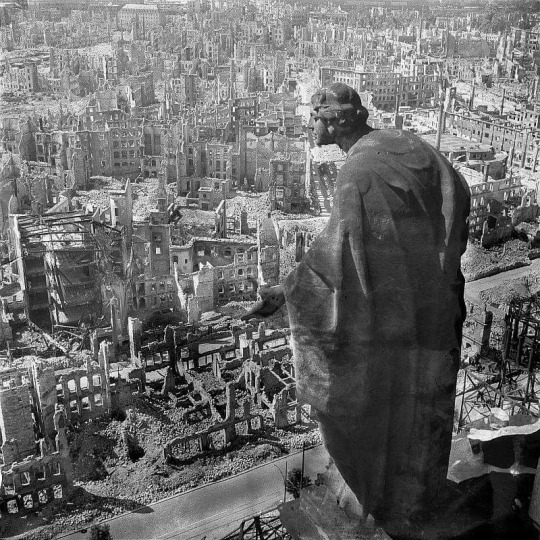
Bombing of Dresden: Aftermath
The Allies claimed that by bombing Dresden, they were disrupting important lines of communication that would have hindered the Soviet offensive. This may be true, but there is no disputing that the British incendiary attack on the night of February 13 to February 14 was conducted also, if not primarily, for the purpose of terrorizing the German population and forcing an early surrender. It should be noted that Germany, unlike Japan later in the year, did not surrender until nearly the last possible moment, when its capital had fallen and Hitler was dead.
Because there were an unknown number of refugees in Dresden at the time of the Allied attack, it is impossible to know exactly how many civilians perished. After the war, investigators from various countries, and with varying political motives, calculated the number of civilians killed to be as little as 8,000 to more than 200,000. Estimates today range from 35,000 to 135,000. Looking at photographs of Dresden after the attack, in which the few buildings still standing are completely gutted, it seems improbable that only 35,000 of the million or so people in Dresden at the time were killed. Cellars and other shelters would have been meager protection against a firestorm that blew poisonous air heated to hundreds of degrees Fahrenheit across the city at hurricane-like speeds.
At the end of the war, Dresden was so badly damaged that the city was basically leveled. A handful of historic buildings–the Zwinger Palace, the Dresden State Opera House and several fine churches–were carefully reconstructed out of the rubble, but the rest of the city was rebuilt with plain modern buildings. American author Kurt Vonnegut (1922-2007), who was a prisoner of war in Dresden during the Allied attack and tackled the controversial event in his book “Slaughterhouse-Five,” said of postwar Dresden, “It looked a lot like Dayton, Ohio, more open spaces than Dayton has. There must be tons of human bone meal in the ground.”
Read more at: The Bombing of Dresden - Wikipedia
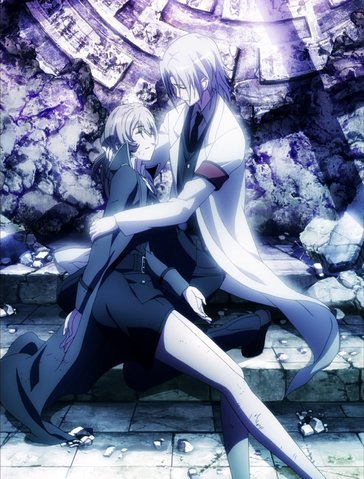
K Project's Inspiration
The subject that GoRA wished to tackle when taking reference from these events is obviously one: what if there there WAS a reason for the Allies to bomb Dresden?
What if something had been uncovered under the historic city, and was being studied to be turned into a weapon to use in the war?
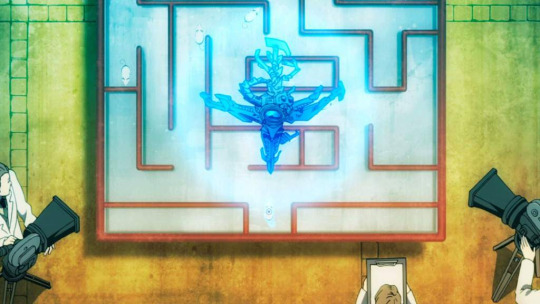
What if said weapon survived the raid and was taken elsewhere?
How would it affect the people who come in contact with its power?
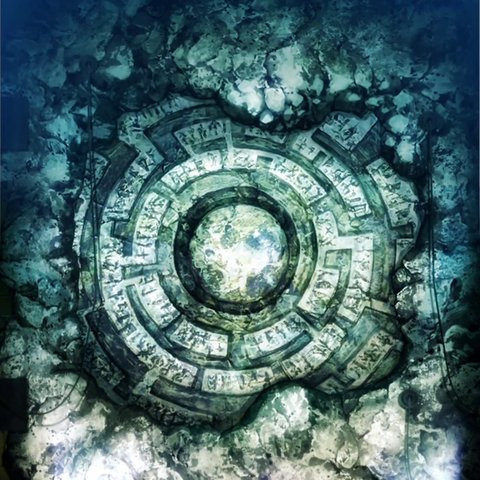
6 notes
·
View notes
Photo

Mountains
#crimea#mountains#forest#trees#sun#clouds#bluesky#sky#naturelovers#naturescape#nature#landscape#journey#travel#yalta#ambience#lightray
1 note
·
View note
Photo







Little bits of Moscow from this past weekend. The weather was fantastic, and there’s a flower/landscaping festival going on in the city so a lot of squares and boulevards have temporary decorations installed. There are flower beds, ivy walls, wild flowers and grasses, even forest trees. I was very pleased to see many bees and bumblebees working there. On Tretyakovskaya Square near the Red Square, there’s a wooden market (named Yalta after the Crimea town) with exquisite carved decorations reminiscent of the South. The market sells jams, honeys, ice cream and berry teas, and there’s jazz playing over the speakers. That’s the Moscow I love. ❤
127 notes
·
View notes
Photo

Родные места #ялта #поход #hike #travel #crimea #крым #гид #ходунишки #лес #природа #nature #forest (at Yalta) https://www.instagram.com/p/CAsjeB1JDAc/?igshid=130o5at01dd0e
1 note
·
View note
Photo

#photo #photography #people #люди #лес #forest #поход #treck #Ялта #yalta #crimea #crimea_vteme #crimeaisnow #крым #autumn #осень #russia #россия #природа #nature (at Ai-Petri)
#crimeaisnow#photo#russia#люди#forest#autumn#nature#поход#photography#yalta#осень#ялта#crimea_vteme#treck#крым#россия#лес#people#crimea#природа
0 notes
Video
youtube
Гаспра. Заповедный лес, бирюзовое озеро, родник Загмата, DH Ягодка. 21 М...
#Yalta#Crimea#Crimean lakes#lake#Yalta reserve#Crimean spring#Crimea nature#rest in Crimea#Crimean forest#Ai-Petri mountain#Crimea springs#Zagmata source#Cold beam#Crimea vineyards#Mishor#Yalta forest#view in Miskhor#Yagodka trail#bike trails#Gaspra mountain trails#тропа Ягодка#тропа Пила#Холодная балка#Гаспра#Крым#лес#сосновыйц лес#крымский лес#природа Крыма#ялтинский заповедник
0 notes
Text
HOW TO GET CONFERENCE ALERTS IN GERMANY?
Germany is the largest or the heart of Europe. It circumscribes several landscapes including mountains, sandy plains, forests, agricultural lands, etc. The most important natural resources include coal, natural gas, timber, copper, salt, etc. It is the chief producer of lignite.
Conferences are for only business purposes are a cliché. During World War II, the Potsdam conference in Germany was held for peace settlements in Europe. Then after the Yalta conference was held in which the main discussion was about the liberated countries of Eastern Europe. There it was decided that the German military would be abolished and the major war criminals would undergo a trial before the international court of justice.
So it is quite clear that conferences are not only held for business but also about for discussion of politics, academics and treaties for the smooth running of a country. These conferences marked a very important moment in world history. And if you are a student then conferences are compulsory for you.

It is quite clear by now how important these conferences are. And finding such important conferences could require some work. But not to worry, we are here to help you out. To get conference alerts in Germany all you need to do is subscribe to our channel. We will provide you with regular updates about the date, time, topic and venue so that you can sort out your schedule. All you need to do is scroll down the page and click on the subscribe button. All these updates as well as the subscription are free.
Some of the Germany conference alerts are:
International conferences about education and e-learning
International conferences about the environment and natural science
International conferences about economic, finance and accounting
International conferences about pharma and food
International conferences about aerospace engineering
So to get more conference alerts in Germany / Germany conference alerts do subscribe to our website.
To know more details about conferences in Germany or any other country then do check out our website www.conferencealerts.net
#Conference Alert in Germany#Germany Conference Alerts#International Conference in Germany#Upcoming Conferences in Germany#Germany Conference Alerts 2021#Germany Conference Alerts 2022
0 notes
Photo








13th October 1911 : Day at Ai-Petri part 3/4
Tsar Nicholas II, Grand Duchess Olga Nikolaevna, Grand Duchess Maria Nikolaevna, Grand Duchess Tatiana Nikolaevna and Prince Felix Felixovitch Yusupov (Count Sumarokov-Elston) at Ai-Petri, 13th October 1911.
"13th October. Thursday. Woke up to a thick fog. At 10 o'clock went with Olga, Tatiana and Maria on a motor to Ai-Petri. Before reaching the Farm, left the area of fog and further up, the whole day stayed radiant and warm. At Ai-Petri, we met with Yusupov and his guests and went to his deer paddock to the left of the Bakchisaray high road. Mounted horses and rode 4 versts through a beautiful beech forest to a steep cliff, from where there is a striking view of the Kokoz Valley and three hillsides. Returned to the tent and sat down to have breakfast at 1 3/4. The warmth in the mountains and the air were intoxicating. Returned home at 5 o'clock delighted with the day [...]"
1911 Diary of Tsar Nicholas II
"13th October. Thursday. In the morning at 10 o'clock with Papa, we three drove by motor through Ai-Petri to the new estate of Pr. Yusupov. Everyone rode on horseback and looked at the view of the mountains, beautiful [...] Had breakfast in his Egyptian tent and were home at five. Heavy fog in Livadia and Yalta all day long. Had dinner with Mama and Papa. Rode a gray horse "Dulber" [...] "
1911 Diary of Grand Duchess Olga Nikolaevna
Photos from: Grand Duchess Tatiana Nikolaevna's 1910-1912 Album/ Pages 21b - photos 313, 314, 315, 316 Grand Duchess Olga Nikolaevna's 1910-1912 Album/ Pages 25b - photos 413, 414, 415, 417
#1911#Ai-Petri#crimea#Olga Nikolaevna Romanova#Tatiana Nikolaevna Romanova#Maria Nikolaevna Romanova#OTM
74 notes
·
View notes
Text
Assessment Task 1 Experimentation, Research and Play
Basically, I enjoy using watercolours as they have a beautiful way of moving on paper. However sometimes it can be difficult to weld the natural beauty of them as they can easily become muddy. Within this poster, I fear that this ‘muddiness” may have occurred, however this is something that I am continually working on. I have used watercolours as I feel that they enable a softness to the work, as well as introducing an element of playfulness and experimentation. I have real control over the watercolours and the way that they move and form which I am quite fond of. I also dabbled in some acrylic and gesso to see whether the image could have a three-dimensional element added to it, however I felt that this began to overpower the subtly of the watercolours too much. Therefore, there is evidence of this experimentation in the lower left-hand corner of the work but it does not appear anywhere else.
My style of painting for this assessment was heavily influenced by Cherry Hood’s watercolour portraiture. I allowed the paint to drip lazily down the page which creates an atmosphere within the painting which I love. A sort of unwieldiness of the watercolours. The beauty of them is when they are able to naturally create their own artwork.
I had a quite clear image of what I wanted to create for this poster. I really wanted to convey the idea that as humans, we are intimately connected with nature. This is why the deforestation of the Amazon rainforest is something that should be rediscovered. I began with drawing the facial features of the work. this enabled me to position my work.
Research: I have copied the sources that I found interesting.
https://en.wikipedia.org/wiki/Deforestation_of_the_Amazon_rainforest
“The deforestation of the Amazon Rainforest - the alarming rate that one of the richest natural organisms is astounding. “Deforestation of the Amazon rainforest accelerated significantly between 1991 and 2004, reaching an annual forest loss rate of 27,423 km² in 2004. ... By 1995, 70% of formerly forested land in the Amazon, and 91% of land deforested since 1970, had been converted to cattle ranching.”
http://www.thegreeninterview.com/2011/03/21/most-important-idea-world-sunday-column-march-20-2011/
“The Most Important Idea in the World – Sunday column, March 20, 2011
Posted on Mar 21, 2011
A lung, says David Suzuki, is a light, squishy organ, because it’s mostly air. In fact a human being is largely made up of air. With every breath we take, components of air are drawn in and released back into the atmosphere. They travel throughout our body, interacting with every cell. Air, Suzuki notes, "embraces us so intimately that it is hard to say where we leave off and air begins."
"But if you are air and I am air, then I am you, and you are me," says Suzuki in his magnificent legacy lecture, A Force of Nature, which showed on CBC a week ago. He described a thought experiment by the astronomer Harlow Shapley, who noted that air is 1% argon. Shapley calculated that a single breath contains a vast number of argon atoms — about 3.0 times 10 to the 19th power.That’s 30,000,000,000,000,000,000 atoms.
Because argon is an inert gas, we breathe it in and out without absorbing it. When you exhale, those argon atoms re-enter the air of the room to be inhaled and exhaled by others. A year from now, those same atoms will have circulated around the entire planet, and fifteen of them will have made their way back to you to be breathed in again. In The Sacred Balance, Suzuki quotes Shapley as saying that "Your next breath will contain more than 400,000 of the argon atoms that Ghandi breathed in his long life. Argon atoms are here from the conversations at the Last Supper, from the arguments of diplomats at Yalta, and from the recitations of the classic poets." And from the exhalations of the dinosaurs, the whales and the sabre-toothed tigers.
Air, says Suzuki, is "a matrix that joins all life together," past and future as well as present. We inhale our ancestors and exhale into the lungs of our children. Furthermore, by befouling the air – and the water, and the earth – we very literally befoul ourselves.
In Slow Death by Rubber Duck, Bruce Lourie and Rick Smith make precisely the same point. We think of pollution as "out there," in the environment, separate from us. It is not. Every human body, Suzuki notes, now contains two or three pounds of plastic as well as innumerable chemicals and toxins. We are the environment. The environment is us.
This idea is woven deeply into human consciousness, from aboriginal spirituality to ancient European philosophy. In Scott Macmillan’s magnificent choral work, Celtic Mass for the Sea, librettist Jennyfer Brickenden quotes a nugget of ancient Gaelic wisdom: "He who tramples on the earth, tramples on himself." We come from the earth and return to the earth. Ashes to ashes, dust to dust.
The idea that we exist separate from our surroundings is a trick of thought and language. It was exploded for me by the late, wonderful Alan Watts in The Book: On the Taboo Against Knowing Who You Are. For Watts, our normal sensation of self as a separate being is a hoax, "hallucination which accords neither with Western science nor with the experimental philosophy-religions of the East." In truth, what we see can only be known by its opposites. Language calls this a wave, and that a trough – but there is no wave without a trough. We cannot know darkness without knowing light. There is no up without a down, no death without life, no Self without an Other.
This is the great secret, says Watts, the secret of "who or what you really are behind the mask of your apparently separate, independent, and isolated ego." And what you really are is the world. As Watts puts it, "we do not ‘come into’ this world. We come out of it, as leaves from a tree. Every individual is an expression of the whole realm of nature, a unique action of the total universe." Each breath, says Suzuki, speaking the precise scientific truth, "is a sacrament, an affirmation of our connection with all other living things, a renewal of our link with our ancestors and a contribution to generations yet to come." Like the air, this idea is everywhere. As it should be. It is the most important idea in the world.”




^^ There are a few photographs involving this experimental painting that I decided to do in order to experiment with some different techniques. Whilst creating my work, I wanted to experiment with gesso and the thickness that i could lay it on. The work was a girl wearing a dress that is dramatically flowing which in turn creates a mountainous illusion to the work which then also alludes to her surroundings becoming something that she wears, fashion is a way the people can freely (usually) express themselves... or so thats what the vision was.. I wanted to see whether the gesso would be able to mimic the ripples of her dress, however i found that the gesso was too smooth. It was too easy to move around, thus the ripples didn’t work the way that i wanted them to. Also, it wasn’t a very good medium to use as it took a couple of days to dry fully, and even then, the gesso was still quite soft to touch.










2 notes
·
View notes
Photo

“26 (8) of March (April), my son went to the intelligence in Yalta. At breakfast we were informed that two naval officers from the “Colchis” wanted to see me. I asked them to come in and have breakfast with us. They announced to me that they had come to offer the Empress and the Grand Dukes the use of their ship, to which I replied that they had all left on the English battleship. They were extremely puzzled and disappointed and immediately offered to take us all with them. I was very touched by this proposal and thanked them warmly. At this time, my son returned and said, That the Empress takes us with her, that there is still time, but one should not lose it, and that of things one can take with them only what is necessary. I said goodbye to the officers, and since they had to go to Yalta, I said that I would report to them the Grand Duke Nikolai Nikolaevich and I think that they will be accepted by them.
God, how hard it was to leave Koreiz. My heart was bursting with pain and bitterly beating. About 5 hours, taking the hands of our granddaughter, we got into the engine and went to Yalta on the lower road … At Yalta Mall, we found a myriad of people, anxiously running, carrying with them their meager belongings. A steam-boat was sent for us from the Malbro. To get to it you had to go through the decks of two steamers.
It’s getting dark. The general bustle, abrupt conversations, entreaties to take with you and besides a lot of curious people. Thanks to the courtesy of the British officers, we were able to temporarily enter the captain’s cabin to wait until we were allowed to pass further since at that time the refugees were loaded on an English destroyer. All this mass of refugees forcefully squeezed, with faces completely bewildered. In view of the departure of the royal family, everyone was in complete panic. After half an hour we were already under the protection of the English flag.
For me, the consciousness that I leave Russia and become a refugee was oppressive: my soul was melancholy, and I experienced tormenting moments, which no one, even the worst enemy, would not want to endure. Ah, how hard it all is, hard … inconceivable melancholy of me all forged, I walked along the deck of this huge ship, stubbornly greedily peering at home, saw mountains, wrapped up in a rushing fog, pine forests that stood out dark spots, barely illuminated already Appeared stars. The whole picture became more dear to me than ever, not because, between it and me, there was already that space that could not bring me closer to them, but could only remove it. I felt that I was losing all this: “Farewell for a long time, forever.” I did not cry, but inside my heart sobbed. When the flag was lowered on the ship and the English anthem was heard, I listened anxiously to him, and when the English played “God save the Tsar,” my wife and I quietly began to cry…”
-Count Felix Felixovich Sumarkov-Elston, Prince Youssoupoff Senior recalling his departure from Russia. From E. Krasnykh book, “Prince Felix Yusupov: In everything give thanks…”
18 notes
·
View notes
